-
 Bitcoin
Bitcoin $84,458.0914
0.91% -
 Ethereum
Ethereum $1,594.6498
1.40% -
 Tether USDt
Tether USDt $0.9997
-0.02% -
 XRP
XRP $2.0953
1.29% -
 BNB
BNB $585.8219
1.36% -
 Solana
Solana $133.4769
7.01% -
 USDC
USDC $0.9999
-0.01% -
 Dogecoin
Dogecoin $0.1563
2.13% -
 TRON
TRON $0.2445
-3.65% -
 Cardano
Cardano $0.6161
2.06% -
 UNUS SED LEO
UNUS SED LEO $9.4444
0.55% -
 Chainlink
Chainlink $12.4662
2.64% -
 Avalanche
Avalanche $19.2395
2.48% -
 Toncoin
Toncoin $2.9466
3.63% -
 Stellar
Stellar $0.2370
1.87% -
 Shiba Inu
Shiba Inu $0.0...01190
2.80% -
 Sui
Sui $2.0985
1.05% -
 Hedera
Hedera $0.1588
1.25% -
 Bitcoin Cash
Bitcoin Cash $330.6320
3.49% -
 Polkadot
Polkadot $3.6363
3.70% -
 Litecoin
Litecoin $74.7529
-0.92% -
 Hyperliquid
Hyperliquid $16.4922
10.38% -
 Dai
Dai $1.0000
-0.01% -
 Bitget Token
Bitget Token $4.3637
1.70% -
 Ethena USDe
Ethena USDe $0.9990
-0.02% -
 Pi
Pi $0.6051
-3.15% -
 Monero
Monero $217.1749
-0.79% -
 Uniswap
Uniswap $5.2140
1.44% -
 OKB
OKB $51.2977
-1.94% -
 Pepe
Pepe $0.0...07271
2.79%
Global Top 10 Hottest ETFs: What are the Most Popular ETFs Worldwide?
Among the most popular worldwide ETFs is the SPDR S&P 500 ETF Trust (SPY), which tracks the iconic S&P 500 index, offering exposure to 500 large-cap US companies.
Nov 07, 2024 at 01:18 pm
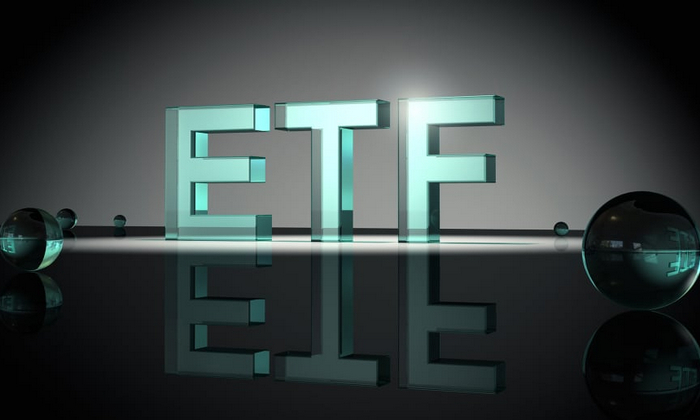
Global Top 10 Hottest ETFs: What are the Most Popular ETFs Worldwide?
Exchange-traded funds (ETFs) have become increasingly popular in recent years, offering investors a diversified and cost-effective way to access a range of asset classes. With thousands of ETFs available worldwide, identifying the hottest and most sought-after can be a daunting task. To provide investors with a comprehensive overview, here are the top 10 hottest ETFs globally:
1. SPDR S&P 500 ETF Trust (SPY)
- Tracks the iconic S&P 500 index, representing the performance of 500 large-cap US companies.
- Market cap: $364 billion
- Expense ratio: 0.0945%
2. Invesco QQQ Trust (QQQ)
- Tracks the NASDAQ-100 index, comprising 100 leading non-financial companies listed on the Nasdaq stock exchange.
- Market cap: $156 billion
- Expense ratio: 0.2%
3. iShares Core MSCI Emerging Markets ETF (EEM)
- Invests in a basket of around 800 emerging market stocks from 24 developing countries.
- Market cap: $55 billion
- Expense ratio: 0.69%
4. Vanguard Total Stock Market ETF (VTI)
- Provides exposure to the entire US stock market, tracking the CRSP US Total Market Index.
- Market cap: $53 billion
- Expense ratio: 0.03%
5. iShares MSCI EAFE ETF (EFA)
- Targets developed markets excluding the US and Canada, investing in around 900 stocks from Europe, Asia, and Australasia.
- Market cap: $46 billion
- Expense ratio: 0.31%
6. SPDR Portfolio S&P 500 ETF (SPLG)
- Offers a low-expense way to track the S&P 500 index, with a focus on value stocks.
- Market cap: $38 billion
- Expense ratio: 0.03%
7. Vanguard Total Bond Market ETF (BND)
- Provides diversified exposure to the US bond market, investing in a broad range of government and corporate bonds.
- Market cap: $31 billion
- Expense ratio: 0.04%
8. iShares Core U.S. Corporate Bond ETF (AGG)
- Tracks the performance of investment-grade corporate bonds issued in the US.
- Market cap: $30 billion
- Expense ratio: 0.05%
9. Vanguard FTSE All-World ex-US ETF (VEU)
- Invests in stocks from developed and emerging markets outside the US, providing global diversification.
- Market cap: $27 billion
- Expense ratio: 0.07%
10. iShares iBoxx $ Investment Grade Corporate Bond ETF (LQD)
- Targets US dollar-denominated investment-grade corporate bonds with maturities between 10 and 30 years.
- Market cap: $26 billion
- Expense ratio: 0.15%
These ETFs offer a diverse range of investment strategies, risk profiles, and asset classes. They are popular choices for investors seeking long-term growth, income generation, or portfolio diversification. However, it's important to assess individual risk tolerance and investment objectives before selecting any ETF.
Disclaimer:info@kdj.com
The information provided is not trading advice. kdj.com does not assume any responsibility for any investments made based on the information provided in this article. Cryptocurrencies are highly volatile and it is highly recommended that you invest with caution after thorough research!
If you believe that the content used on this website infringes your copyright, please contact us immediately (info@kdj.com) and we will delete it promptly.
- Bitcoin (BTC) to $300,000 Looks Unstoppable—Here’s the Chart Proof
- 2025-04-17 18:15:14
- On April 17, 2025, Jesse Pollak, a well-known voice in the Ethereum ecosystem, took to Twitter
- 2025-04-17 18:15:14
- Solinabot Records Over 2900 SOL in Processed Payouts on Telegram Since February Launch
- 2025-04-17 18:15:12
- Dogecoin (DOGE) May Transition to a Deflationary Model, Opening the Door to New Levels of Value
- 2025-04-17 18:15:12
- Fantasy.top: The Most Efficient and Entertaining Way to Do It
- 2025-04-17 18:10:12
- Superheaven haven't made music in 10 years, but they've been gaining prestige faster in recent years than they ever did
- 2025-04-17 18:10:12
Related knowledge
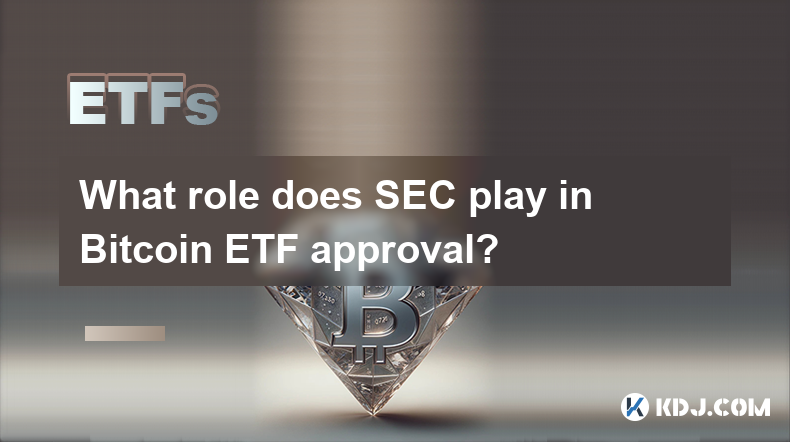
What role does SEC play in Bitcoin ETF approval?
Feb 25,2025 at 06:48am
Key Points:SEC's Role in Bitcoin ETF Approval ProcessHistorical Efforts to Establish a Bitcoin ETFSEC's Criteria for Bitcoin ETF ApprovalPotential Impact of a Bitcoin ETF on the Cryptocurrency MarketTimeline and Outlook for Bitcoin ETF ApprovalArticle:SEC Play in Bitcoin ETF ApprovalThe United States Securities and Exchange Commission (SEC) plays a crit...
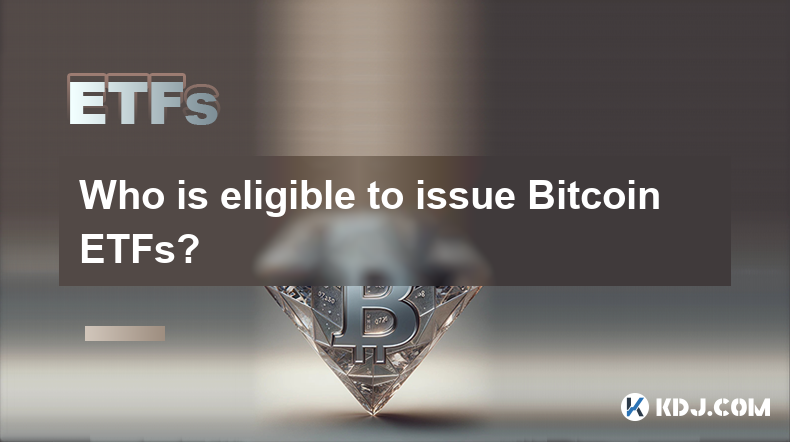
Who is eligible to issue Bitcoin ETFs?
Feb 25,2025 at 11:13am
Key Points:Only regulated financial institutions with the necessary expertise and infrastructure are eligible to issue Bitcoin ETFs.The Securities and Exchange Commission (SEC) has not yet approved any spot Bitcoin ETFs, but has approved several futures-based ETFs.Applicants must meet stringent requirements, including having a strong track record and su...
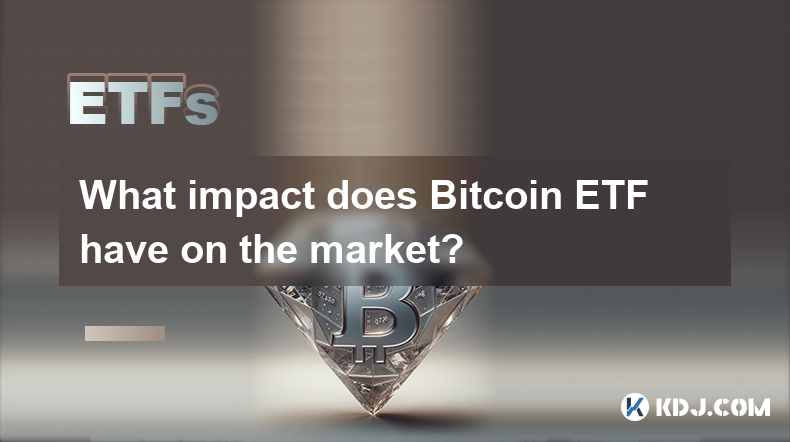
What impact does Bitcoin ETF have on the market?
Feb 25,2025 at 11:37am
Key Points:Introduction to Bitcoin ETFs and their role in the cryptocurrency marketHistorical development and performance of Bitcoin ETFsPotential benefits of Bitcoin ETFs for investors and the marketRisks and limitations associated with Bitcoin ETFsRegulatory considerations and their impact on Bitcoin ETFsArticle:Introduction to Bitcoin ETFsBitcoin exc...
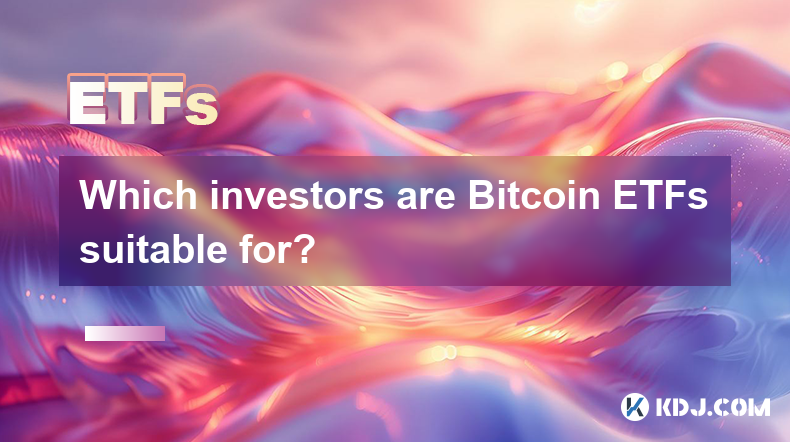
Which investors are Bitcoin ETFs suitable for?
Feb 27,2025 at 04:01pm
Key Points:Understanding Bitcoin ETFsBenefits of Bitcoin ETFsSuitability of Bitcoin ETFs for Different InvestorsAssessing Risk Tolerance and Investment GoalsConsidering Short-Term and Long-Term StrategiesExamining Tax ImplicationsSeeking Professional AdviceUnderstanding Bitcoin ETFsBitcoin exchange-traded funds (ETFs) are investment vehicles that track ...
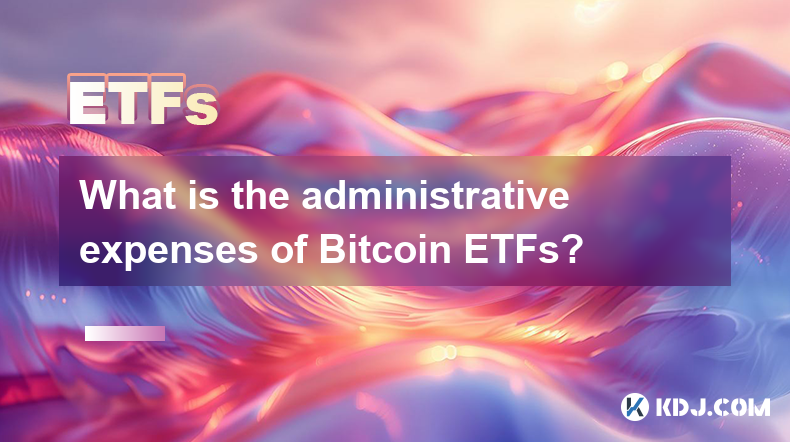
What is the administrative expenses of Bitcoin ETFs?
Feb 26,2025 at 12:24am
Key Points:Administrative expenses are a crucial factor to consider when evaluating Bitcoin ETFs.These expenses can significantly impact the performance of the fund and ultimately the investor's returns.Understanding the various components of administrative expenses is essential for informed decision-making.Comparing administrative expenses across diffe...
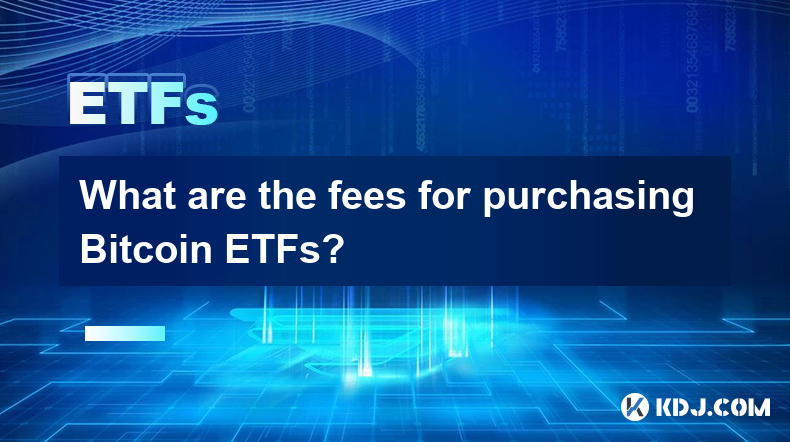
What are the fees for purchasing Bitcoin ETFs?
Feb 27,2025 at 07:13pm
Key Points:Bitcoin exchange-traded funds (ETFs) are a cost-effective and regulated way to gain exposure to Bitcoin.Fees associated with Bitcoin ETF purchases vary depending on the platform, trading volume, and account type.It is essential to evaluate fee structures carefully to optimize investment returns.Fees Associated with Purchasing Bitcoin ETFs1. B...

What role does SEC play in Bitcoin ETF approval?
Feb 25,2025 at 06:48am
Key Points:SEC's Role in Bitcoin ETF Approval ProcessHistorical Efforts to Establish a Bitcoin ETFSEC's Criteria for Bitcoin ETF ApprovalPotential Impact of a Bitcoin ETF on the Cryptocurrency MarketTimeline and Outlook for Bitcoin ETF ApprovalArticle:SEC Play in Bitcoin ETF ApprovalThe United States Securities and Exchange Commission (SEC) plays a crit...

Who is eligible to issue Bitcoin ETFs?
Feb 25,2025 at 11:13am
Key Points:Only regulated financial institutions with the necessary expertise and infrastructure are eligible to issue Bitcoin ETFs.The Securities and Exchange Commission (SEC) has not yet approved any spot Bitcoin ETFs, but has approved several futures-based ETFs.Applicants must meet stringent requirements, including having a strong track record and su...

What impact does Bitcoin ETF have on the market?
Feb 25,2025 at 11:37am
Key Points:Introduction to Bitcoin ETFs and their role in the cryptocurrency marketHistorical development and performance of Bitcoin ETFsPotential benefits of Bitcoin ETFs for investors and the marketRisks and limitations associated with Bitcoin ETFsRegulatory considerations and their impact on Bitcoin ETFsArticle:Introduction to Bitcoin ETFsBitcoin exc...

Which investors are Bitcoin ETFs suitable for?
Feb 27,2025 at 04:01pm
Key Points:Understanding Bitcoin ETFsBenefits of Bitcoin ETFsSuitability of Bitcoin ETFs for Different InvestorsAssessing Risk Tolerance and Investment GoalsConsidering Short-Term and Long-Term StrategiesExamining Tax ImplicationsSeeking Professional AdviceUnderstanding Bitcoin ETFsBitcoin exchange-traded funds (ETFs) are investment vehicles that track ...

What is the administrative expenses of Bitcoin ETFs?
Feb 26,2025 at 12:24am
Key Points:Administrative expenses are a crucial factor to consider when evaluating Bitcoin ETFs.These expenses can significantly impact the performance of the fund and ultimately the investor's returns.Understanding the various components of administrative expenses is essential for informed decision-making.Comparing administrative expenses across diffe...

What are the fees for purchasing Bitcoin ETFs?
Feb 27,2025 at 07:13pm
Key Points:Bitcoin exchange-traded funds (ETFs) are a cost-effective and regulated way to gain exposure to Bitcoin.Fees associated with Bitcoin ETF purchases vary depending on the platform, trading volume, and account type.It is essential to evaluate fee structures carefully to optimize investment returns.Fees Associated with Purchasing Bitcoin ETFs1. B...
See all articles























































































